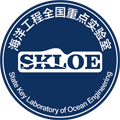Eight Key Open Questions of Science and Technology
2023-10-16
Message from the head, State Key Laboratory of Ocean Engineering

Asking good questions is often a starting point of a revolutionary breakthrough. Good examples include the famous 7 Clay millennium problems and the 125 open questions released in SCIENCE in 2021 at the 125th anniversary of Shanghai Jiaotong University (SJTU), which greatly promote the development in mathematics, science and technology. Ocean engineering is becoming more and more important for the future of human being. What are the most challenging problems in ocean engineering, which might make great breakthroughs in future?
To celebrate the 80th anniversary of Department of Naval Architecture and Ocean Engineering, SJTU, the scientists and researchers in State Key Laboratory of Ocean Engineering (SKLOE), China, proposed the following 8 key open questions in ocean engineering after serious discussions and wide communications, to which the ocean engineering community hopefully should pay more attentions so as to make a ceaseless progress in this field.
At last, happy 80th birthday to Department of Naval Architecture and Ocean Engineering, Shanghai Jiaotong University!

Prof. – Dr. Shijun Liao
Head, State Key Laboratory of Ocean Engineering
Eight Key Open Questions in Ocean Engineering
Question 1: Whether does the statistical stability of turbulent flows exist or not?
The famous Lorenz model comes from the Navier-Stokes equations. This fact indicates that turbulent flows should have close relationships with chaos. Currently, it has been discovered that there exists such kind of chaotic systems, namely ultra-chaos, whose statistic results are unstable, i.e. rather sensitive to small disturbance. For an ultra-chaotic system, it is impossible to repeat any results of physical experiments and/or numerical simulations, since physical or numerical disturbance always exist. Note that reproducibility is a cornerstone of modern science, thus the current paradigm of our modern scientific researches might be invalid for an ultra-chaotic system. Therefore, it is very important to know whether solutions of the Navier-Stokes equations and/or other mathematical models about turbulent flows are stable in statistical meaning or not.
Question 2: How to use AI to efficiently solve highly nonlinear hydrodynamic problems in ocean engineering with satisfied accuracy?
Due to the so-called “curse of dimensionality”, it is very difficult to solve highly nonlinear hydrodynamic problems in ocean engineering by means of the first-principle-based methods. Currently, some highly nonlinear problems have been successfully solved by means of AI. Can AI provide us a way based on a large amount of data and combination of first-principle-based methods to efficiently solve highly nonlinear hydrodynamic problems in ocean engineering with satisfied accuracy?
Question 3:What are the influences of hydrodynamic environments on the nonlinear propagation of acoustic waves in the ocean?
The variations of water density, temperature and sound speed along the depth in deep seas, and the variations of the seabed bathymetry in shallow waters are the major sources inducing the nonlinear effects of acoustic wave propagation. To investigate the interactions among the acoustic waves and the hydrodynamic waves and vortices, it is needed to compare with the above-mentioned sources, and to specify the interesting frequency range and scenarios that the hydrodynamic-action induced nonlinear effects of acoustic wave propagation are of practical importance.
Question 4:How to develop new principles and methodologies for designing unmanned maritime vehicles?
As unmanned maritime vehicles gain increasing popularity in military missions and scientific research, the corresponding design principles and methodologies need to be innovated continuously to promote its adaptability and autonomy. One prominent design principle is modularity, which, contrary to devising the prototype as a whole, focuses on sketching the draft of specific parts and the roadmap of assembling, thereby enhancing adaptability to various missions without major redesign efforts. Another significant trend of design principle in fulfillment of high autonomy is the embedment of intelligence into hardware design, which leverages the evolved morphologies and materials to satisfy requirements directly from autonomous systems instead of human interactions. Moreover, in the future, engineers may interact with the trained “artificial designing brain” through natural language to generate, testify, and iterate the envisioned designs, with the help of machine learning models of massive parameters and complex structure.
Question 5:How to improve the accuracy of converting scaled model experiment results to full-scale data?
Historically, the fields of naval architecture and ocean engineering have relied on a combination of scale model testing and the law of similarity to predict the performances of full-scale vessels. Although the scaling effects on accuracy of such extrapolation methods were discovered almost as soon as they were proposed, their use is still very important in the absence of more precise alternatives. For a long time, people have been attempting to explore the reasons for the uncertainty of similarity laws based on computational fluid dynamics, scale model tests and full-scale ship measurement data. How to achieve necessary accurate prediction of full-scale ship performances based on the data of scale model tests through theoretical advancements needs to be solved in naval architecture and ocean engineering.
Question 6: How to accurately sense or infer ocean environments and loads using advanced sensing technology and inverse engineering?
Ships and offshore structures are subject to different kinds of environmental loads due to waves, current, wind, ice, etc. During conceptual study of a new design, the main environmental loads which affect its structural safety and global performance are usually determined and derived from theoretical methods and/or model-scale tests in water or ice basins, which suffer from uncertainties as the result of idealizations and scalability issues. It remains as a big challenge how to measure and back-calculate external environmental loads, such as ice loads, in temporal and spatial domain with high precision based on in-situ structural responses and global motions of marine structures. The main difficulties include: a) advanced sensing technology for direct and indirect measurement of environmental loads and structural responses; b) inverse engineering inference of the dynamic environmental loads based on motion and structural response measurement; c) inverse engineering inference of the environmental characteristic parameters based on motion and structural response measurement; d) inference of the whole-body environmental load distribution based on spatially sparse measurement.
Question 7: How to develop the technologies for low-cost and high-efficiency utilization of marine renewable energies?
Marine renewable energies, including offshore wind, wave, marine and tidal current energies, as well as energies from ocean thermal and salinity gradients, are important resources for the large-scale and world-wide utilization of renewable energies in the era of green shift. Developing cost-effective solutions for industrialization through up-scaling and optimization is the ultimate goal. Due to the complexities in aerodynamics, hydrodynamics and structural dynamics at the individual turbine and farm levels, efficient yet accurate computer simulation tools and experimental techniques need to be further developed, validated against field data and implemented in design analysis for engineering projects. Marine and tidal current turbines and wave energy converters need to be advanced from concepts to MW-scale demonstrations and the key technologies and equipment for high power efficiency and survivability still need to be developed. A reliable and low-cost supply chain is also needed for the commercial development of all marine renewable energies.
Question 8: What are the dominant energy, power and propulsion systems for shipping in the future?
There have been three propulsion revolutions in the shipping’s history, symbolized by widespread applications of sails, steam engines and diesel engines. While occurrence of the three shipping propulsion revolutions is attributed to meet individuals’ needs or seek for higher voyage speed and lower fuel consumption, the fourth revolution is gradually coming in the 21st century as a breakthrough from individuals’ needs to common benefits of whole human beings for sustainable development. This revolution will be featured by development of green low- or zero-carbon power systems and energy diversification for various application scenario. A variety of potential low- or zero-carbon energy, power and propulsion systems such as liquefied natural gas, green methanol, ammonia, hydrogen, on-board carbon capture and storage etc. are being paid close attention. While intensive developments are ongoing at worldwide institutions, disruptive technologies that can dominate the future shipping’s propulsion are expected.


